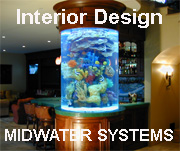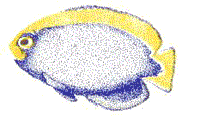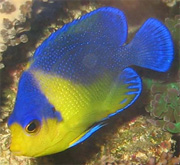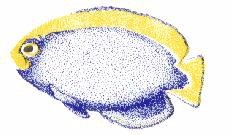|
THE ECHINODERMS,
THEIR BIOLOGY
By. Jim Wolf C.S.U.N. Marine Biologist
The keystone characteristic of this group is their water vascular system.
It not only dictates where they can live, but provides them with methods
of respiration and movement. On the surface of most echinoderms is a small
pore called a madreporite. Through this pore enters sea water which is
then diverted through a series of channels to end in the tube feet. The
system is quite leaky, and consequently there is a steady flow of sea water
through the animal.
This water vascular system can be used as a source of oxygen for respiration.
Many sea cucumbers also have a complex respiratory tree. The surface of
many echinoderms is perforated by extensions of the body wall. Through
these thin mem- branes of the body wall respiration can occur. All of this
sea water in contact with so many parts of the animal has its price however.
Echinoderms are called "isotonic with their environment". This means that
the concentration of salts in their body is equal to the concentration
of salts of the sea water in which they live. Many invertebrates have this
feature, however echinoderms also have lots of tissue in contact with the
water. As a result, these animals are very sensitive to changes in salinity.
This is one of the most compelling reasons as to why there are no echinoderms
in fresh water. Indeed, a sea cucumber placed in fresh water will swell
up and explode!
Most echinoderms are of one sex, and reproduce by shedding their gametes
directly into the water. The gametes soon fuse, and the developing embryo
spends three days to three months floating in the water column. It then
metamorphosises into a small replicate of the adult. During their embryological
development these animals show many similarities to vertebrate animals,
and with the exception of tunicates (AKA sea squirts), are our closest
relatives in a salt water invertebrate aquarium! Some females of certain
species will retain the eggs in their body, and collect the sperm from
to water. They will then brood the developing ju- venile for some time,
ultimately releasing small replicates of themselves. In addition many species
of starfish and brittle stars can reproduce by breaking off a small piece
and having this piece generate a whole new individual. In some species
of brittle stars this may be the primary method of reproduction.
Echinoderms lack a centralized nervous system, and have their nerves
distributed over their body in a sort of net like fashion. Despite this
simple arrangement of nerves these animals have a variety of sensory structures.
The tube feet and body wall are sensitive to touch, and "smell". They have
structures analogous to our inner ear which aids in determining up and
down. They are also capable of sensing small currents in the water, and
some echinoderms even have primitive eyes! With all of these adaptations
it is no wonder as to why the Echinoderms dominate the sea.
|











